Six PLT GreenSchools, one school district, and one institution of higher education are among the 46 schools, 6 school districts, and 6 institutions of higher learning recognized this year as U.S. Department of Education Green Ribbon Schools (ED-GRS).
The awards acknowledge the innovative efforts of students, teachers, and school administrators across the country who are working to improve the sustainability, health, and safety of school facilities; ensure nutrition and fitness practices for a lifetime of wellness and productivity; and engage students in real-world learning. With the 2018 cohort, ED has now honored some 385 schools, 62 districts, and 40 postsecondary institutions.
PLT GreenSchools Honored as 2018 U.S. Department of Education Green Ribbon Schools
Alabama
- Woodland Forest Elementary School, Tuscaloosa, AL
California
- Jack London Community Day School, Valley Glen, CA
Georgia
- Saddle Ridge Elementary Middle School, Rock Springs, GA
- Georgia Southern University, Statesboro, GA
Kentucky
- Meadowthorpe Elementary School, Lexington, KY
Massachusetts
- Arlington Public School District, Arlington, MA
Minnesota
- River’s Edge Academy School, St. Paul, MN
Missouri
- St. Louis University High School, St. Louis, MO
Three Highlights
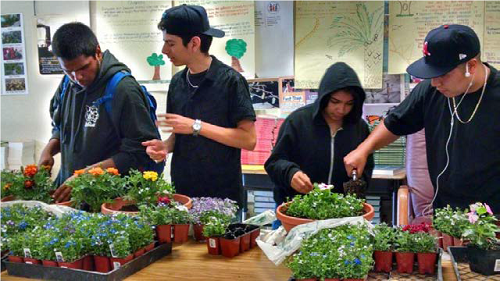 Jack London Community Day School, Valley Glen, CA
Jack London Community Day School, Valley Glen, CA
JLCDS is a small high school in the Los Angeles Unified School District, the largest school district in California. At JLCDS, sustainability is not only about the environment, it’s also about empowering students to redirect their lives and learn to become positive agents of change through an ethic of environmental citizenship. Jack London practices sustainable, urban horticulture. Much of the effort involves container gardening on asphalt, including 30 raised beds designed and built by students, two asphalt cuts, 47 fruit trees, and numerous pots. Vegetables, herbs, berries and fruits are grown organically and the garden literally bursts through the fences.
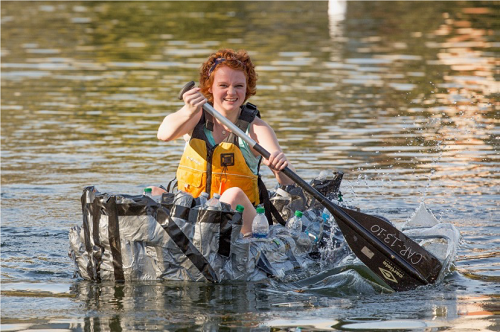 Georgia Southern University, Statesboro, GA
Georgia Southern University, Statesboro, GA
Georgia Southern is the state’s largest and most comprehensive center of higher education south of Atlanta. The university has made the principles of sustainability fundamental to every aspect, for example, preparing students to develop the solutions for a healthy and sustainable society and making sustainability a core value in operations and planning. The university was named one of the top green universities for the sixth consecutive year by the Princeton Review and also was given awards of excellence for work in creating a pedestrian-friendly campus to reduce carbon footprint and encourage healthy habits.
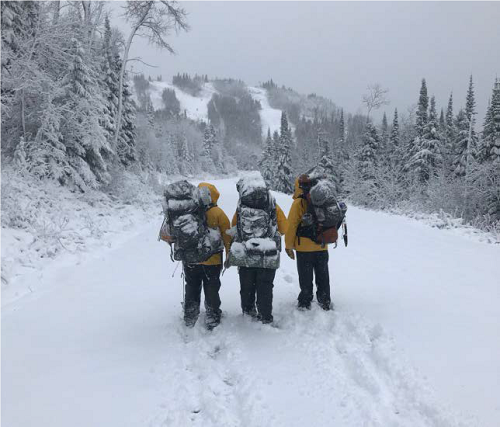 River’s Edge Academy School, St. Paul, MN
River’s Edge Academy School, St. Paul, MN
River’s Edge Academy (REA) is a small environmental charter high school in the Westside neighborhood of St. Paul, Minn. Fifty percent of REA’s 80 students receive free or reduced-price lunch and the school’s outdoor classroom includes a vegetable garden and chicken coop. REA demonstrates conscientious use of the facility and ongoing reductions in resource use, as well as unique courses that incorporate environmental learning, the outdoors, and integrated health curriculum. The school is conveniently located across the street from the Mississippi River and Harriet Island Park where students make use of the outdoors as an educational and recreational resource.
Congratulations to all U.S. Department of Education Green Ribbon Schools, District Sustainability Awardees, and Postsecondary Sustainability Awardees!
A report with highlights on all 58 awardees for 2018 can be found here.


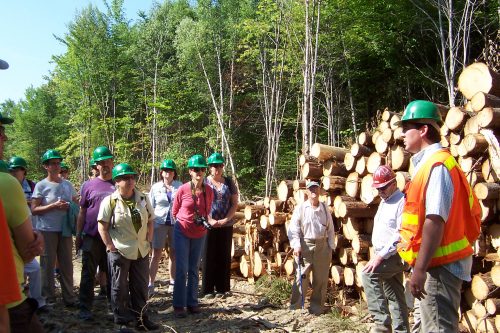 Are you interested in touring your state’s forests and wood product mills? Do you want to learn more about sustainable forestry and how to connect what you learn in the field to the classroom? This summer, immerse yourself in a multi-day teachers’ tour that includes training in curriculum materials with links to all the current academic standards.
Are you interested in touring your state’s forests and wood product mills? Do you want to learn more about sustainable forestry and how to connect what you learn in the field to the classroom? This summer, immerse yourself in a multi-day teachers’ tour that includes training in curriculum materials with links to all the current academic standards. Project Learning Tree has published a new set of activities designed to engage middle and high school students in STEM (science, technology, engineering, and math) as they calculate the economic and environmental benefits of trees. Students input data they collect into a free online tool that calculates the dollar value of the benefits provided by a tree, or a set of trees.
Project Learning Tree has published a new set of activities designed to engage middle and high school students in STEM (science, technology, engineering, and math) as they calculate the economic and environmental benefits of trees. Students input data they collect into a free online tool that calculates the dollar value of the benefits provided by a tree, or a set of trees.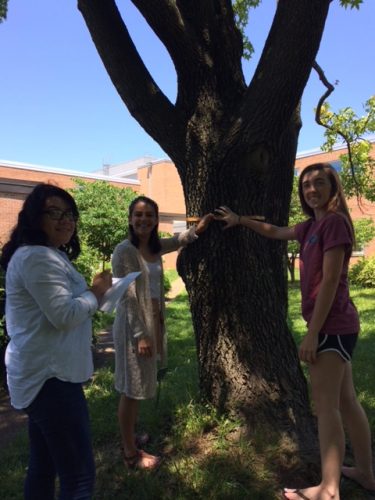
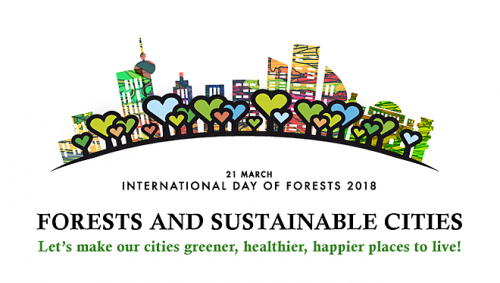 As more and more of us live and work in cities, urban forests and trees and the benefits they provide — from filtering the air of harmful pollutants to reducing noise pollution to providing us with shade and places to socialize — become increasingly important.
As more and more of us live and work in cities, urban forests and trees and the benefits they provide — from filtering the air of harmful pollutants to reducing noise pollution to providing us with shade and places to socialize — become increasingly important.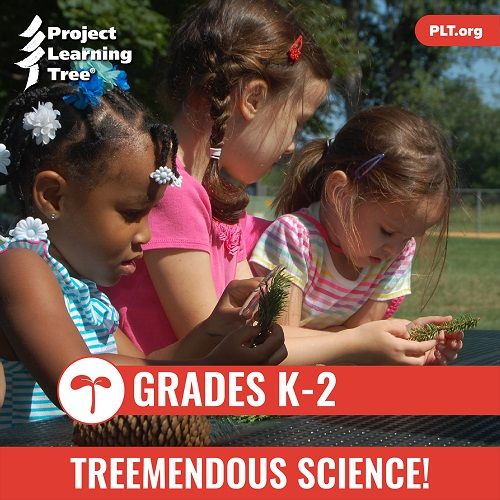 PLT’s new e-unit for Kindergarten through Grade 2, called Treemendous Science!, is here! Launched in October, it joins two e-units for older students introduced in July.
PLT’s new e-unit for Kindergarten through Grade 2, called Treemendous Science!, is here! Launched in October, it joins two e-units for older students introduced in July.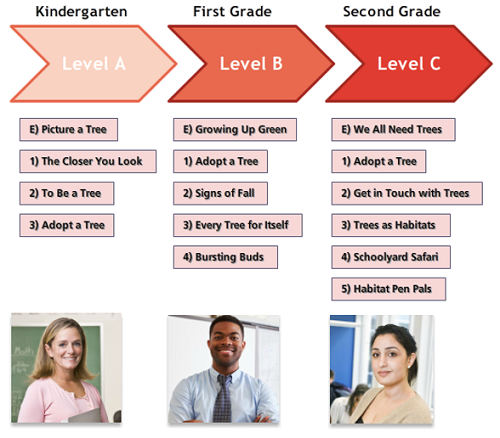 “The unit’s Level A, Level B, and Level C options provide an innovative and unique way to accommodate for this variance among students,” Stallard said.
“The unit’s Level A, Level B, and Level C options provide an innovative and unique way to accommodate for this variance among students,” Stallard said.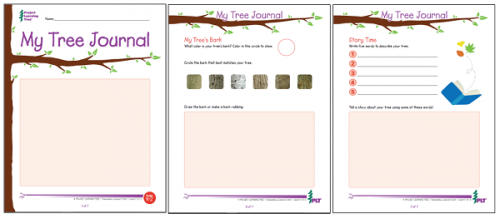
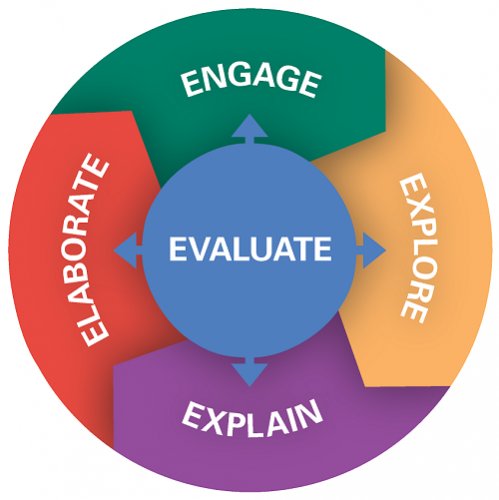 For 30 years, the 5E Instructional Model has withstood the test of time as a useful way to build on knowledge to improve student learning. Treemendous Science! uses the 5E Instructional Model in its lessons. For example, Level B of the unit’s three levels includes the following:
For 30 years, the 5E Instructional Model has withstood the test of time as a useful way to build on knowledge to improve student learning. Treemendous Science! uses the 5E Instructional Model in its lessons. For example, Level B of the unit’s three levels includes the following: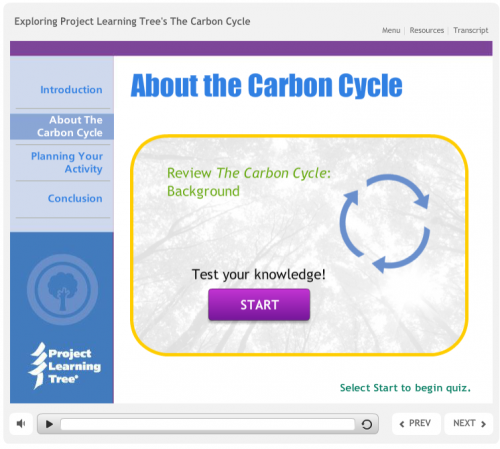
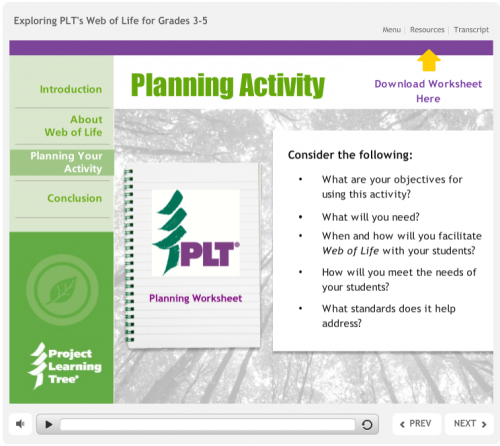
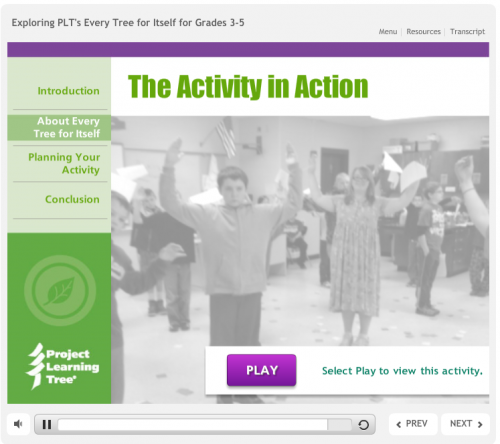
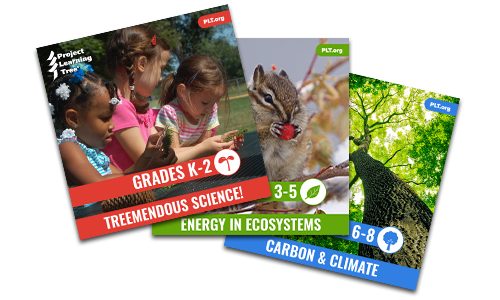
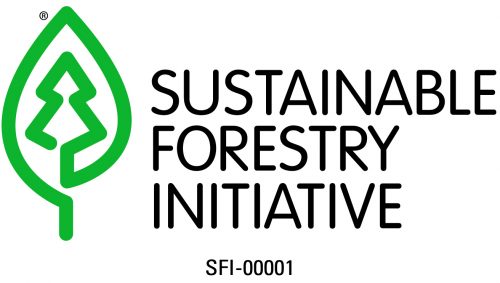 In an exciting move that positions the Project Learning Tree program for future growth, the Sustainable Forestry Initiative Inc. (SFI) announced today that PLT has been transferred to SFI Inc. from the American Forest Foundation (AFF).
In an exciting move that positions the Project Learning Tree program for future growth, the Sustainable Forestry Initiative Inc. (SFI) announced today that PLT has been transferred to SFI Inc. from the American Forest Foundation (AFF). 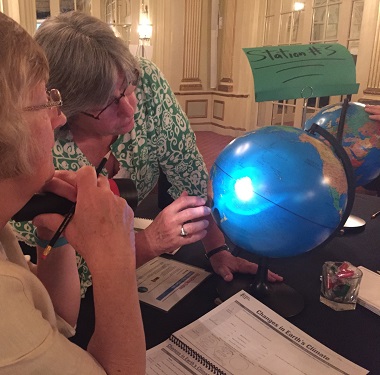 The 2017 Project Learning Tree International Coordinators’ Conference was held April 24-27 in Louisville, KY. Now in its 31st year, our annual conference is designed to provide professional development, networking opportunities, and information about new initiatives to PLT’s partners who deliver PLT programming to educators across the country and internationally, too.
The 2017 Project Learning Tree International Coordinators’ Conference was held April 24-27 in Louisville, KY. Now in its 31st year, our annual conference is designed to provide professional development, networking opportunities, and information about new initiatives to PLT’s partners who deliver PLT programming to educators across the country and internationally, too.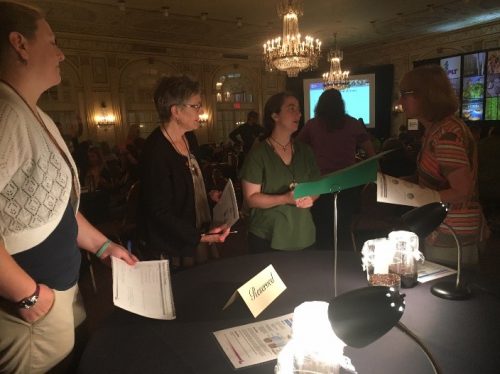 The focus of this year’s conference was to introduce PLT’s network to our new online units for Grades 3-5 and 6-8 teachers. These new e-units will officially launch later this month. Read more about
The focus of this year’s conference was to introduce PLT’s network to our new online units for Grades 3-5 and 6-8 teachers. These new e-units will officially launch later this month. Read more about 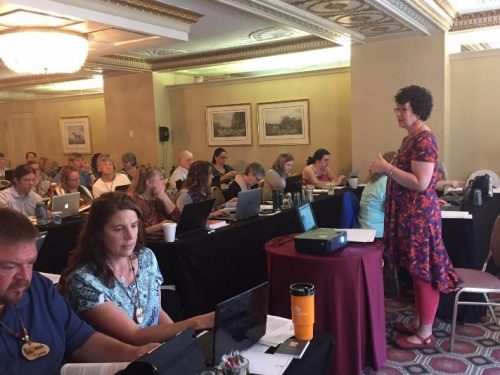 True to the PLT model, educators will receive PLT’s supplemental curriculum in conjunction with a professional development experience. As such, other sessions at the PLT conference provided PLT State Coordinators and workshop facilitators with guidance on how to plan and facilitate high-quality in-person professional development for educators in their state around the new e-units using an outcome-based approach.
True to the PLT model, educators will receive PLT’s supplemental curriculum in conjunction with a professional development experience. As such, other sessions at the PLT conference provided PLT State Coordinators and workshop facilitators with guidance on how to plan and facilitate high-quality in-person professional development for educators in their state around the new e-units using an outcome-based approach.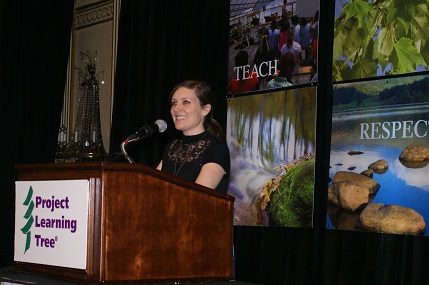
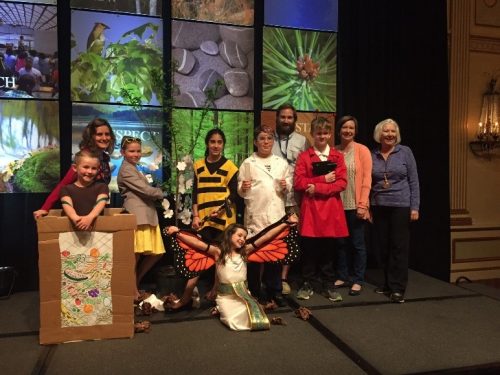
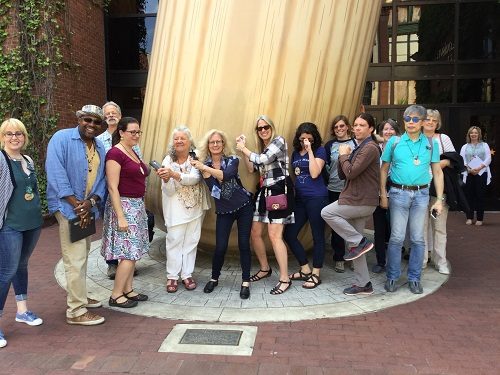 A tour of the factory floor where Louisville Slugger bats are crafted.
A tour of the factory floor where Louisville Slugger bats are crafted.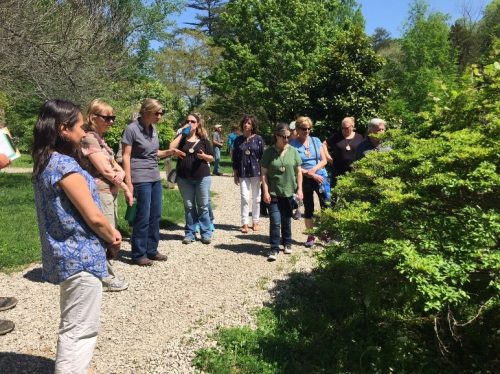
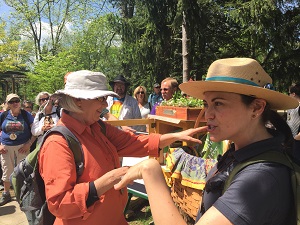
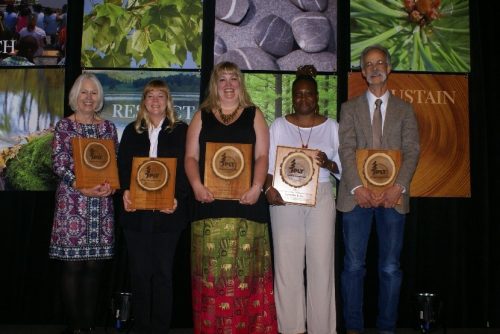 Outstanding Educators — Each year since 1994, National PLT has presented awards to 5 Outstanding Educators and to many other honorees.
Outstanding Educators — Each year since 1994, National PLT has presented awards to 5 Outstanding Educators and to many other honorees. 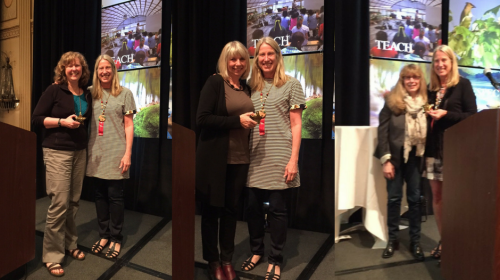 Gold Stars — Each year since 1995, National PLT has presented Gold Stars to individuals and partnering organizations to acknowledge their years of exemplary service to PLT. We are an immeasurably better organization because of their extraordinary personal and professional qualities, commitment and dedication to PLT, energy and expertise. This year, Gold Stars were awarded to (pictured from left to right) Susan Cox (Conservation Educator, U.S. Forest Service, Durham, NH), Susan Sahnow (Director of Oregon Natural Resources Education Program, Oregon State University, Corvallis, OR), and to the North American Association for Environmental Education (the award was accepted by Judy Braus, NAAEE’s Executive Director.)
Gold Stars — Each year since 1995, National PLT has presented Gold Stars to individuals and partnering organizations to acknowledge their years of exemplary service to PLT. We are an immeasurably better organization because of their extraordinary personal and professional qualities, commitment and dedication to PLT, energy and expertise. This year, Gold Stars were awarded to (pictured from left to right) Susan Cox (Conservation Educator, U.S. Forest Service, Durham, NH), Susan Sahnow (Director of Oregon Natural Resources Education Program, Oregon State University, Corvallis, OR), and to the North American Association for Environmental Education (the award was accepted by Judy Braus, NAAEE’s Executive Director.)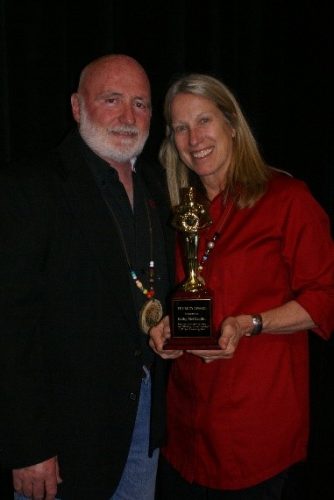 Rudy Award — The Rudy Award, named after Rudolf Schafer who founded PLT in 1976, is PLT’s highest recognition and is only awarded occasionally. The Rudy Award was presented by Frank Gallagher, Director of Environmental Planning and Design at Rutgers University, to Kathy McGlauflin in recognition of her extraordinary leadership as PLT’s Executive Director for the past 32 years.
Rudy Award — The Rudy Award, named after Rudolf Schafer who founded PLT in 1976, is PLT’s highest recognition and is only awarded occasionally. The Rudy Award was presented by Frank Gallagher, Director of Environmental Planning and Design at Rutgers University, to Kathy McGlauflin in recognition of her extraordinary leadership as PLT’s Executive Director for the past 32 years.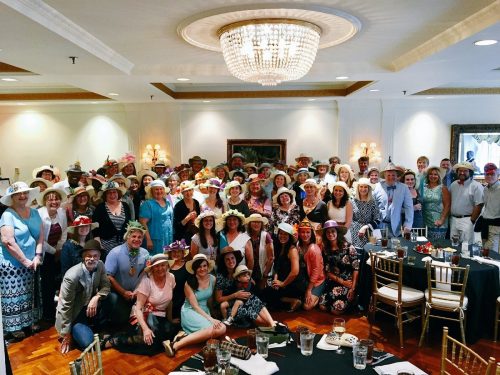
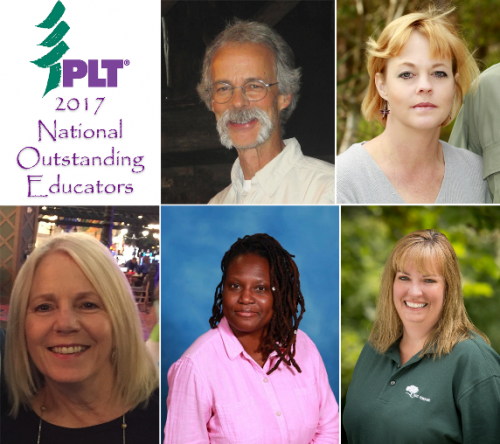
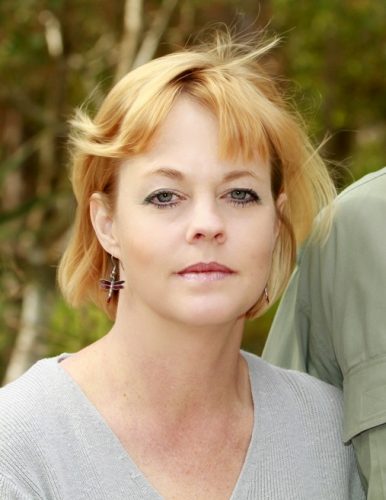 Lori Nicholson: Lori came to St. Marks Wildlife Refuge in Florida in 2005 from the Tallahassee Museum of History and Natural Science. She coordinates the refuge’s wildlife festivals and Nature’s Classroom, a learning center that reaches 15,000 participants each year. She is also active in the League of Environmental Educators of Florida and the Florida Literacy Plan Committees, making her a prominent environmental education leader in the state.
Lori Nicholson: Lori came to St. Marks Wildlife Refuge in Florida in 2005 from the Tallahassee Museum of History and Natural Science. She coordinates the refuge’s wildlife festivals and Nature’s Classroom, a learning center that reaches 15,000 participants each year. She is also active in the League of Environmental Educators of Florida and the Florida Literacy Plan Committees, making her a prominent environmental education leader in the state.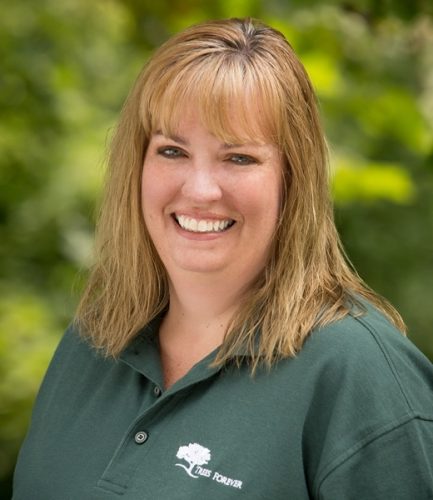 Debbie Fluegel: Debbie works with communities, landowners, and farmers in Illinois to conduct hands-on planting projects to diversify and enhance community forests and to establish and restore native plant areas. She also trains volunteers who, in turn, work with adult and youth groups. She has created new environmental education programs for the state’s vocational agriculture teachers, youth group leaders, and other educators. She has also helped evaluate different training methods for the national PLT office.
Debbie Fluegel: Debbie works with communities, landowners, and farmers in Illinois to conduct hands-on planting projects to diversify and enhance community forests and to establish and restore native plant areas. She also trains volunteers who, in turn, work with adult and youth groups. She has created new environmental education programs for the state’s vocational agriculture teachers, youth group leaders, and other educators. She has also helped evaluate different training methods for the national PLT office.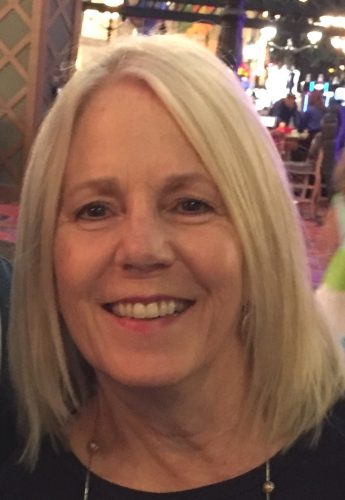 Jana Willis: Jana is a professor of instructional design and technology and department chair at University of Houston-Clear Lake. She works with undergraduates who will become classroom teachers, and provides training to current teachers. She conducted groundbreaking research on the integration of technology and environmental education to improve teaching skills. She has also served on national PLT committees related to community forestry, preservice teaching, and technology integration.
Jana Willis: Jana is a professor of instructional design and technology and department chair at University of Houston-Clear Lake. She works with undergraduates who will become classroom teachers, and provides training to current teachers. She conducted groundbreaking research on the integration of technology and environmental education to improve teaching skills. She has also served on national PLT committees related to community forestry, preservice teaching, and technology integration.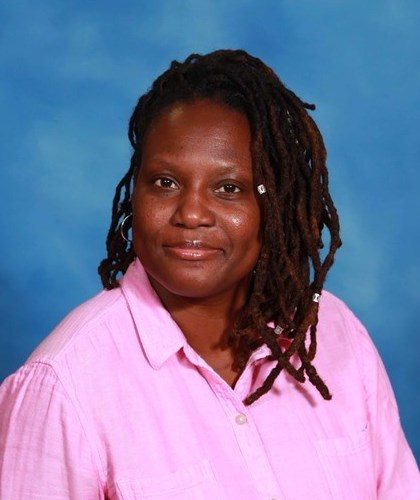 Tarneshia Evans: As Children’s Garden Educator at Lewis Ginter Botanical Gardens in Richmond, Tarneshia plans and carries out nature activities for children and their families. Previously she worked as a pre-K teacher at the Goddard School of Woodlake and instructional assistant at the Martin Luther King Preschool Center in Richmond. She has been a leader in promoting environmental education to strengthen early childhood programs throughout Virginia and to help produce online training programs for the national PLT office.
Tarneshia Evans: As Children’s Garden Educator at Lewis Ginter Botanical Gardens in Richmond, Tarneshia plans and carries out nature activities for children and their families. Previously she worked as a pre-K teacher at the Goddard School of Woodlake and instructional assistant at the Martin Luther King Preschool Center in Richmond. She has been a leader in promoting environmental education to strengthen early childhood programs throughout Virginia and to help produce online training programs for the national PLT office.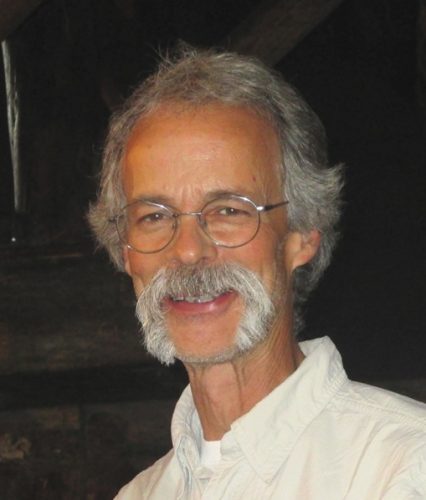 Steve Scharosch: Steve operates Abacus Enterprises, Inc., a firm that develops and uses quantitative methods for land management planning throughout North America. When he realized the importance of educating young people about the environment, he became involved with PLT. He has presented dozens of environmental education workshops to teachers, youth group leaders, and other educators throughout the state. He has also led Wyoming PLT grant-writing, strategic planning, and other efforts to strengthen the program in the state.
Steve Scharosch: Steve operates Abacus Enterprises, Inc., a firm that develops and uses quantitative methods for land management planning throughout North America. When he realized the importance of educating young people about the environment, he became involved with PLT. He has presented dozens of environmental education workshops to teachers, youth group leaders, and other educators throughout the state. He has also led Wyoming PLT grant-writing, strategic planning, and other efforts to strengthen the program in the state.